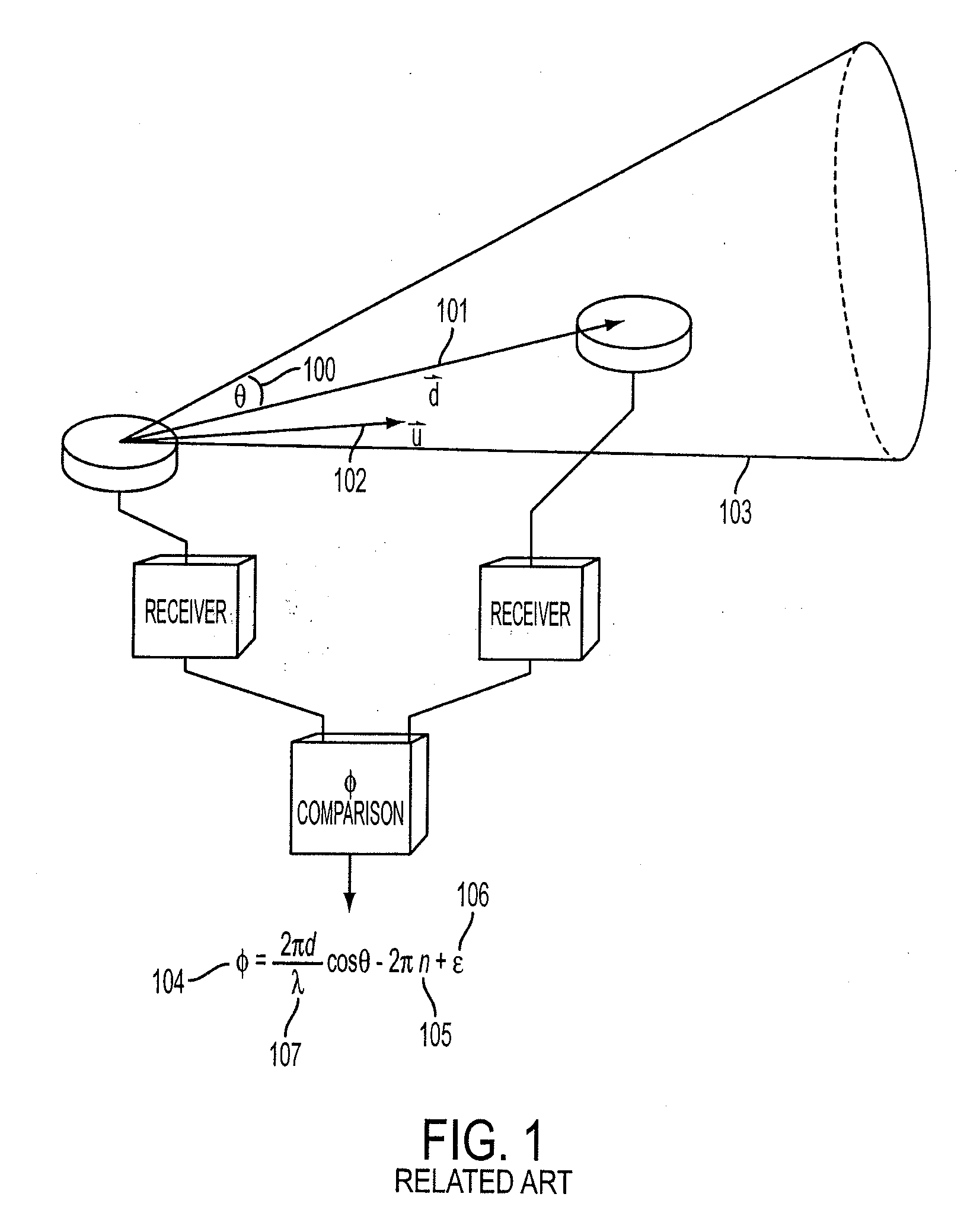Method for single satellite geolocation of emitters using an ambiguous interferometer array
an interferometer array and single satellite technology, applied in direction finders, instruments, measurement devices, etc., can solve the problems of critical aoa uncertainty, source generation of phase measurement ambiguities, and gross errors
- Summary
- Abstract
- Description
- Claims
- Application Information
AI Technical Summary
Benefits of technology
Problems solved by technology
Method used
Image
Examples
Embodiment Construction
[0065]Referring now to the top level method block diagram in FIG. 9 and corresponding flow chart of FIG. 10, the following description is made first with reference to a three element array such as shown, for example, in FIG. 8A by reference numeral 800 which includes two interferometer baselines. A satellite at location 900 including a three element array 800 initially detects an emitter E whose true location is at location 901 shown in FIG. 9.
[0066]Upon initial detection, a set of steps in a Measure and Resolve Interferometer Phase processes 902 and a set of steps in a Generate Location Estimate and Location Statistics processes 903 are carried out. Special operations involving steps 902 and 903 of FIG. 9 unique to a first dwell step occur as shown in FIG. 10 by reference numeral 1000. All possible direction of arrival (DOA) vector ambiguity integer pairs (m, n) are found in step 1001 and each pair is associated with a unique Measure and Resolve Interferometer Phase process 902. Th...
PUM
 Login to View More
Login to View More Abstract
Description
Claims
Application Information
 Login to View More
Login to View More - R&D
- Intellectual Property
- Life Sciences
- Materials
- Tech Scout
- Unparalleled Data Quality
- Higher Quality Content
- 60% Fewer Hallucinations
Browse by: Latest US Patents, China's latest patents, Technical Efficacy Thesaurus, Application Domain, Technology Topic, Popular Technical Reports.
© 2025 PatSnap. All rights reserved.Legal|Privacy policy|Modern Slavery Act Transparency Statement|Sitemap|About US| Contact US: help@patsnap.com



